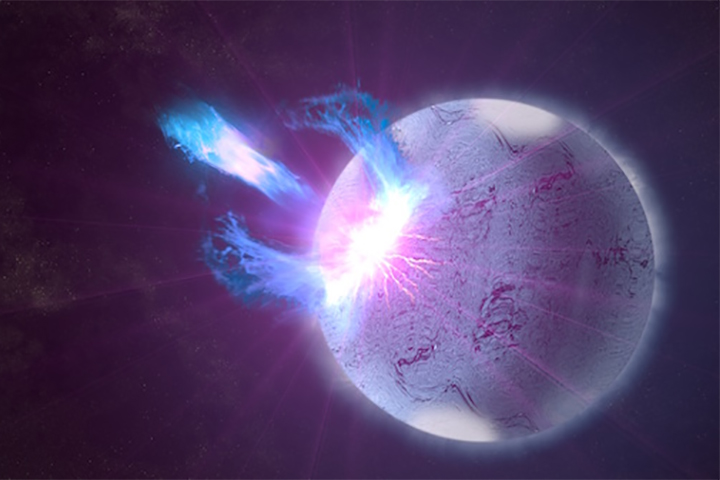Researchers have traced a mysterious radio signal to a point within our own galaxy — and the source appears to be more zombie than alien.
The signal detected in late April appears to have come from a distant object inside our Milky Way galaxy, according to three research papers published in Nature on Wednesday.
The papers lay out how several telescopes, including the CHIME facility in Canada, all heard the millisecond-long signal April 27-28. Researchers gathered multiple radio and X-ray readings from the event, then compared notes to trace the signal’s origin to our own cosmic neighbourhood.
The millisecond-long signal, known as a fast radio burst (FRB), is one of hundreds detected from space over the last 13 years. Most of the brief, occasionally repeating bursts have come from distant parts of the universe, leaving scientists puzzled as to their exact origin point. This latest signal is the first one that scientists have been able to “hear” with clarity.
“Given the source distance, this is the most luminous radio burst ever detected in our own galaxy,” CHIME researcher Daniele Michilli told BBC News.
The signal was so strong that a regular 4G cellphone might have been able to pick it up, according to Christopher Bochenek, the lead researcher on the STARE2 telescope in the United States. STARE2 was one of the other telescopes that detected the signal, in what Bochenek described as a stroke of luck.
“We still don’t really know exactly how lucky we got,” he told reporters on Wednesday. “This could be like a once in five-year thing. Or there could be a few of these things that happen every year.”
The mysterious signals have stoked speculation that they might be a message — or a warning — from distant alien life. However, researchers say the origin for this signal was likely a magnetar — a cosmic name for what is essentially a “zombie” star.

When a star dies, it blows up in a supernova, then collapses inward into a super-dense ball. If that ball gets dense enough, it becomes a black hole, but if not, it often turns into a neutron star.
A magnetar is essentially an extremely rare, mysterious and powerful form of neutron star, according to NASA. It has a tremendously powerful magnetic field that crackles across its surface and occasionally explodes in massive outbursts.
The magnetic field is stronger than 100 trillion refrigerator magnets, or billions of times more than the magnetic force of the sun, according to NASA.

A rupture in the crust of a highly magnetized neutron star, shown here in an artist’s rendering, can trigger high-energy eruptions.
NASA’s Goddard Space Flight Center/S. Wiessinger
The new papers suggest that the radio bursts may be caused by a magnetar’s decaying magnetic field, although more study is needed.
“It demonstrates that magnetars can release a huge amount of radio energy with properties like those of FRBs, implying that at least (some) FRBs are probably coming from magnetars,” Michilli said.
“There’s this great mystery as to what would produce these great outbursts of energy, which until now we’ve seen coming from halfway across the universe,” Kiyoshi Masui, an MIT physics professor, told The Independent. He was also one of the researchers on the project.
“This is the first time we’ve been able to tie one of these exotic fast radio bursts to a single astrophysical object,” he said.
It’s unclear how many magnetars exist in the universe, but NASA has only identified a handful of them to date.
Researchers say the magnetars are a plausible source for some of the one-off bursts they’ve heard.
However, they still don’t explain why we’ve been getting other signals on repeat.
© 2020 Global News, a division of Corus Entertainment Inc.









